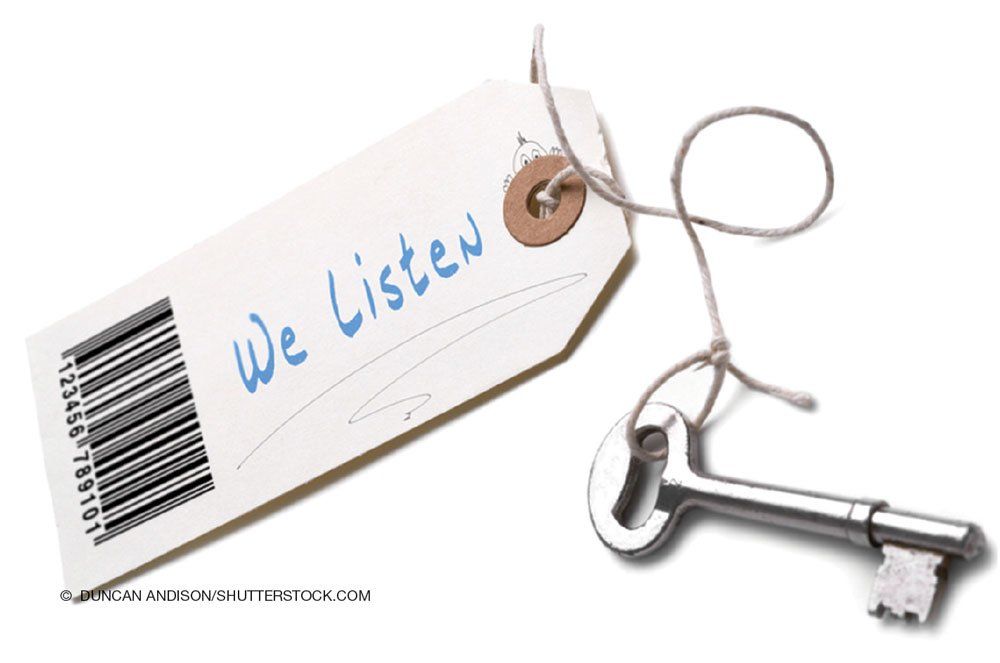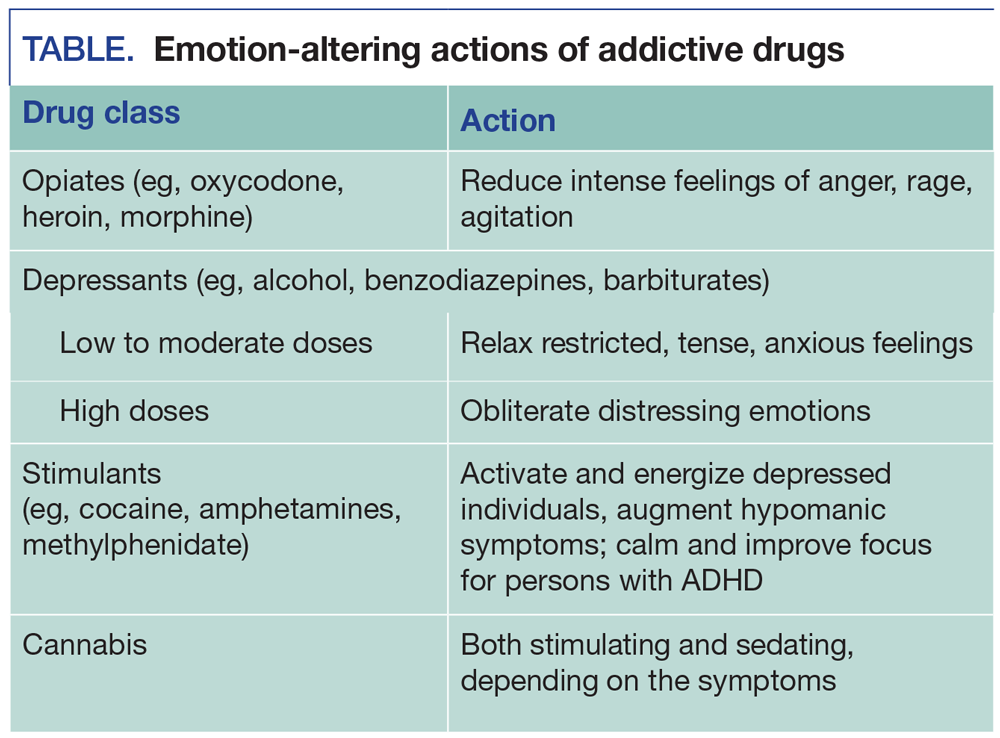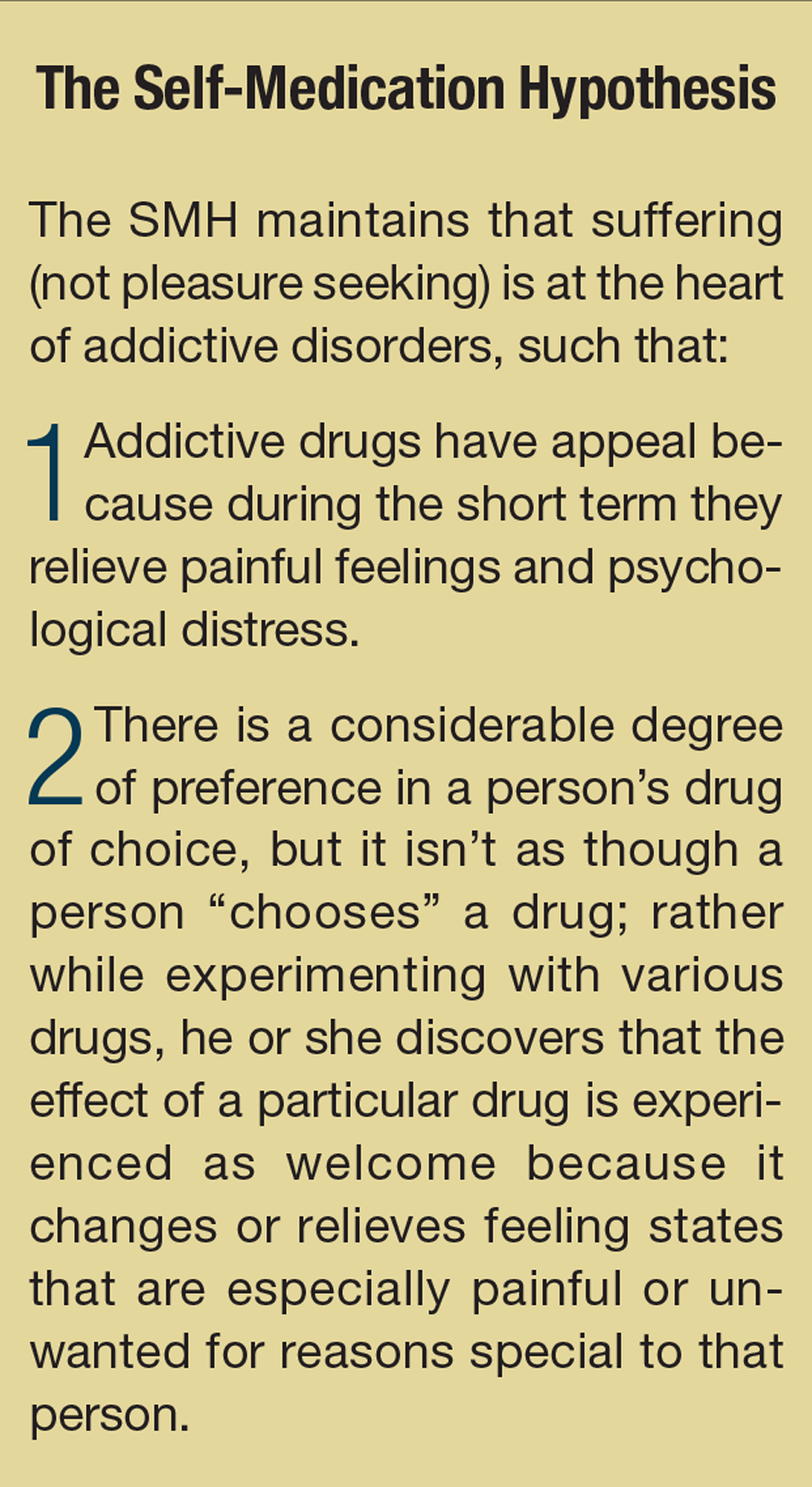Publication
Article
Psychiatric Times
The Theory of Self-Medication and Addiction
Author(s):
To understand and to feel understood is a powerful antidote to relieve human psychological suffering. Therein lies the heart of the self-medication hypothesis of addiction.
© Duncan Andison/shutterstock.com

TABLE. Emotion-altering actions of addictive drugs

The Self-Medication Hypothesis

Throughout the span of my career, I have adhered to the maxim that to understand and to feel understood is a powerful antidote to relieve human psychological suffering. Treating individuals with substance use disorders is no exception. Too frequently, people who have succumbed to drug addiction have heard dire predictions from family, friends, and clinicians of what the drugs do to them -a reaction that more often than not is unhelpful. Such reactions heighten the shame and guilt that persons with substance addiction heap upon themselves (as does society at large) and contribute to the already considerable burden of stigma.
In contrast, it is more empathic and fruitful to ask, “What did the drug do for you?” The self-medication hypothesis (SMH) of addiction is embedded in this inquiry -an inquiry that I pursue with all my patients. It is a powerful and relationship-building way to start treatment with patients. It invites exploration and understanding of the critical feelings and related issues that predispose one to use addictive drugs.
Self-medication
The self-medication hypothesis, a theory about addiction, was first published in 1985 as a cover article in the American Journal of Psychiatry.1 It focused on how and why individuals are drawn to and become dependent on heroin and cocaine. An updated version was published in the Harvard Review of Psychiatry in 1997 with application to conditions that had not been previously considered.2 The hypothesis of self-medication derives from clinical evaluation and treatment of thousands of patients (practice-based evidence) spanning 5 decades. It is a theory that has been and continues to be endorsed. It is widely and regularly cited and endorsed by clinicians and investigative scholars, as evidenced in research websites such as Research Gate, Academia.edu, and Google Scholar. In an article in the American Journal of Psychiatry, Mark S. Gold, MD,3 concluded that it was one of the most “intuitively appealing theories” about addiction.
Yet the theory has also been trivialized and dismissed. The expression “self-medication” has become a household expression that detracts from the emotional suffering and complexities of feelings that are at the root of a person’s need to self-medicate. And, it has been dismissed outright in some quarters. But, alternative theories that get at the root of understanding addiction have been few and far between. Theories are important because they help to identify the facts.
Despite the extraordinarily wide inroad of addictive drugs in our society, especially the scourge of opiate dependency and all its tragic and deadly consequences, it is bewildering and disconcerting that we have so little understanding of the reasons for drug addiction. Perhaps part of this is that the recovery culture has designated and popularized alcoholism and addictions as a “disease,” emphasizing the lasting consequences of drug effects on the brain. Neuroscientists have similarly concluded addiction is a “primary disease,” which underscores brain pathways that explain the physiological bases for addiction and relapse. As one neuroscientist said, “Addictive drugs hijack the brain.”
This perspective has stimulated breakthrough findings on underlying brain mechanisms and pathways that provide a biological explanation for addiction, but there have been few or minimal corresponding explorations of why addictive drugs have such a powerful psychological appeal or hold on individuals who succumb to addiction. The SMH provides a valuable investigative and clinical paradigm to address this challenging issue.
Whether it is in the offices of prescribing physicians or in the environs of young people exposed to or experimenting with addictive drugs, only 10% to 20% of users become addicted. It begs the question, “Why is this so?” In the pursuit of answers to this question, the SMH has provided a generation of clinicians with an effective path to help them and their patients understand why this is so, and to work out alternative solutions (Box).
Emotional states
Feelings (eg, sadness, fear, anxiety, anger) are powerful governing emotions in many aspects of our lives. They determine how we regulate ourselves; they are the basis by which we develop a sense of self-esteem and who we are; they are the foundation for a sense of well-being; they are the currency for human connection and attachment; and they are a primary ingredient for guiding our behavior, especially our capacity for self-care, which guides us in the contexts of risk and danger but is often underdeveloped in persons prone to addiction.
Feelings can be a source of comfort and well-being, or more ominously they can be powerfully unsettling and threatening. It is in this latter instance that drugs can become captivating and addictive. Troubling or disturbing feelings persist for a range of reasons. Some originate in early childhood development as a consequence of trauma or neglect. In adults, emotional states become evident as symptoms or are expressed in temperament or aspects of their personality. For some, distressful feelings are intense, volatile, and threatening. In others, feelings remain inaccessible and confusing, rendering the sufferer vulnerable to a nameless interminable dysphoria. For yet others, the painful emotions are rooted in more readily identifiable co-occurring psychiatric conditions.
It is not so much that these individuals seek euphoria, but rather the aim is relief of dysphoria. It is not surprising that individuals with any of these conditions could become attached to the powerful change in emotional state that drugs can provide, especially persons who are prone to addiction. The Table briefly summarizes the effects of some emotion-altering drugs.
As suggested, dependency on addictive drugs may or may not be associated with co-occurring psychiatric disorders. Conversely, in conditions such as PTSD, borderline personality, and bipolar disorders -conditions in which anger and rage can predominate -the disproportionately high co-occurrence with opiate addiction is too great to be by chance.4
Conclusion
SMH is a theory that gets at the human psychological underpinnings of addictive disorders. It does not compete with approaches that emphasize biological or social factors. More likely, the perspectives complement each other. If judiciously integrated, they can enrich our approach to unravelling and solving the elusive equation of addiction. Such an understanding and perspective is in the best humanistic traditions of science, medicine, and psychiatry.
Disclosures:
Dr. Khantzianis Professor of Psychiatry, Part Time, Harvard Medical School at the Cambridge Health Alliance in Cambridge, MA, and a Past President of the American Academy of Addiction Psychiatry.
Dr. Khantzian reports no conflicts of interest concerning the subject matter of this article.
References:
1. Khantzian EJ. The self-medication hypothesis of addictive disorders. Am J Psychiatry. 1985;142: 1259-1264.
2. Khantzian EJ. The self-medication hypothesis of substance use disorders: a reconsideration and recent applications. Harvard Rev Psychiatry. 1997;4: 231-244.
3. Gold MS. Book Forum: Addictions. Am J Psychiatry. 2000;157:1892-1894.
4. Darke S. Pathways to heroin dependence: time to reappraise self-medication. Addiction. 2013; 108:659-667.






